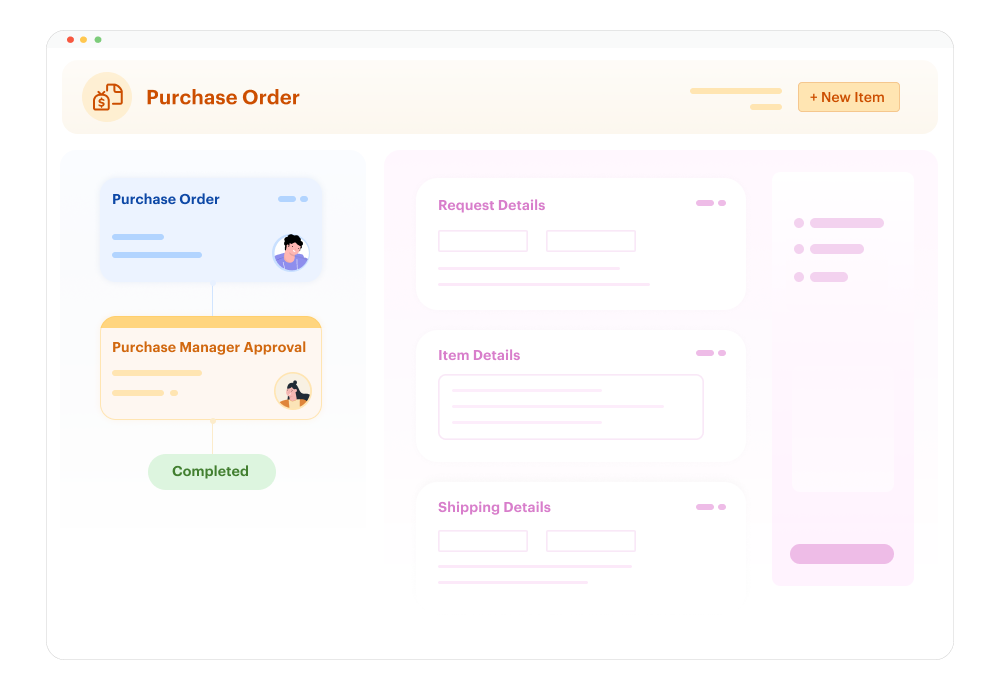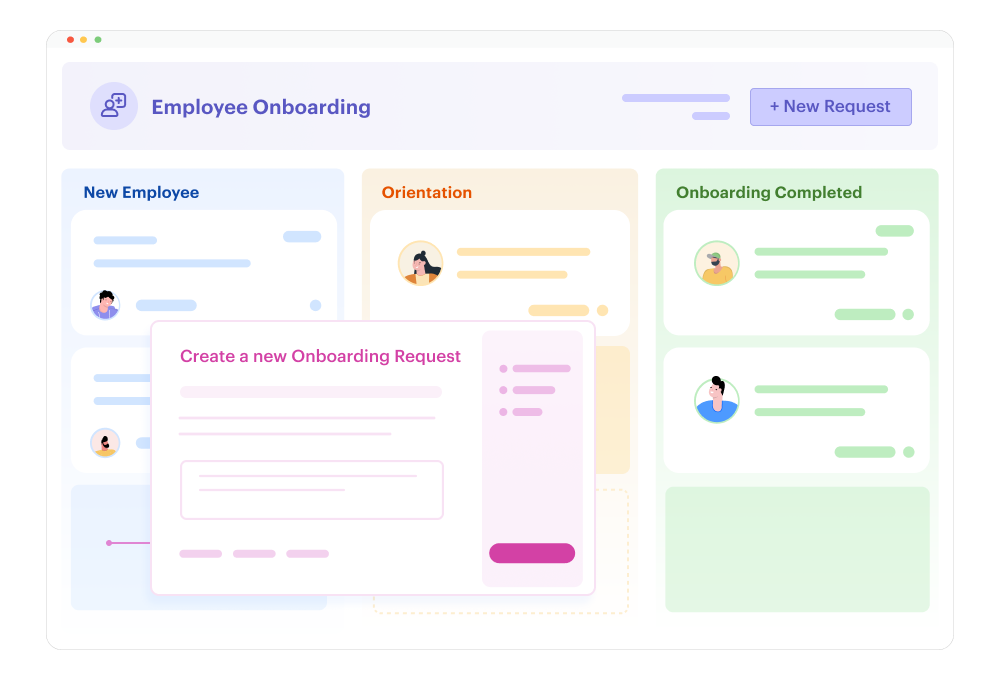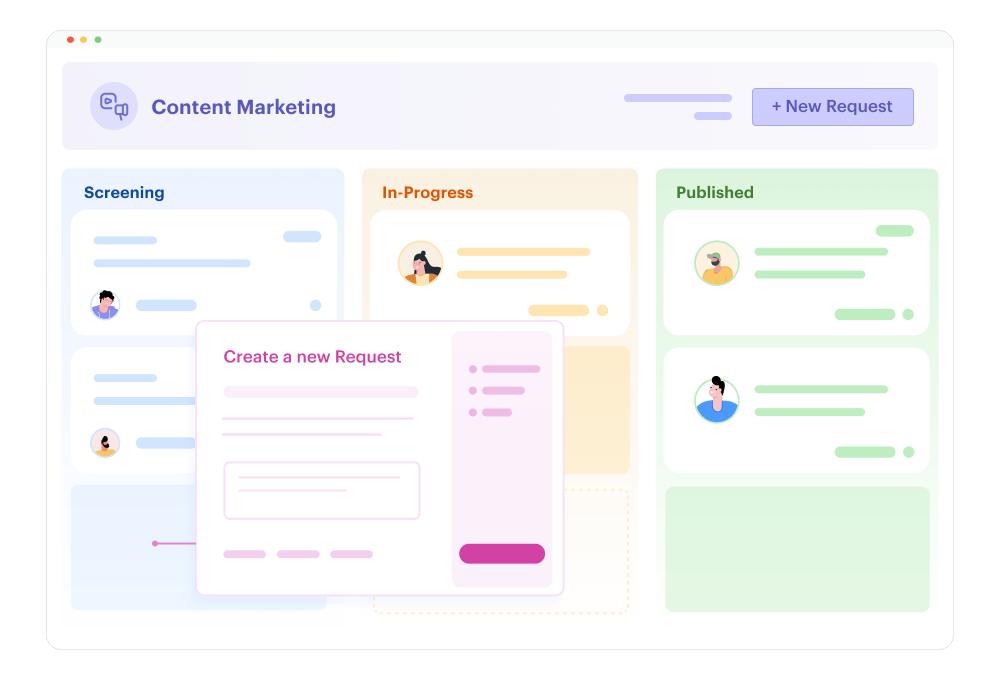Related Articles

Team Kissflow
Updated on 13 Jun 2025 • 5 min read
A workflow application is a software tool that automates the tasks involved in a business process. The workflow application routes data along a predefined path until an item in the process is completed. Tasks in the workflow may include approvals, adding information, or data transfers.
.webp?width=670&height=351&name=Workflow%20Application%20(1).webp)
Workflow applications can be standalone apps that exist on their own or built on a platform where endless numbers of applications reside. Workflow applications help business owners to automate their mundane business processes.
Workflow apps will break a workflow down into a set of data needed to complete the process, and a path for the data to follow. The workflow application will use a form to collect data at different points in the process.
A workflow application guides the process automatically, issuing notifications for humans to complete tasks or triggering system actions with specific commands.
The workflow application also collects data on how the workflow is functioning. It measures the amount of time an individual task takes, the amount of time the entire process takes, how often individual items are rejected or sent back to earlier steps, and where the typical backlogs occur.
Workflows are an integral part of operating a successful business when implemented properly. Workflows provide a specific direction for teams within an organization to follow and establish a standardized business process for completing predefined tasks.
A workflow application is a much sought-after efficiency tool among many industry verticals including manufacturing, IT, customer service, marketing, finance, etc.
When a workflow manWorkflow Managementagement application is not used, most workflows are handled manually. Manual workflows mean that at each task, a human must either pass the existing data to the next task owner (via email or a message) or manually insert specific commands for a system to follow.
Workflows can be paper-based or digital. However, the majority of automated workflow applications focus on digital-based data and communication. Conventional workflow processes were manual, wherein individuals had to go through several paperwork and tasks would progress at a slow pace. Manual workflows also involved a higher chance of human errors.
The advent of automated workflow applications has been transformative for businesses because they have removed the hassles of requiring manual intervention for repetitive tasks and mitigated risks. Automated workflows offer more control over process efficiency with little to no room for errors.
Here’s a feature comparison of the best workflow tools of 2022
Workflow apps are used by business users who are looking to streamline their processes without needing to code. A workflow application essentially helps them gain complete control over their functions by defining their processes, tracing a clear path of each request, and delegating steps to specific users. This helps them stay accountable, boost productivity, improve output quality, and drive timely results.
A workflow application comes with a robust set of features such as:
Easy workflow set-up - the ability to create sophisticated workflows from scratch
Comprehensive form builder - a form builder collects crucial information for context and actionability
Clear task routing/step delegation - the ability to delegate whole tasks or specific steps within the request
Traceability and visibility - the ability to track the status of each request
Collaboration interface - the feature allows teams to collaborate cross-functionally and reassign requests across departments
Reports and analytics - the ability to analyze and track crucial metrics, generate actionable insights and make improvements
Integrations - the ability to integrate with the most popular apps and software to enhance capabilities and functionality
Paid time off (PTO) requests are the ideal candidate for workflows, preferred by over 50% of HR professionals in organizations around the world.
Leave requests usually involve clunky threads of emails, leaving HR scrambling to stay ahead of requests and track approvals. Keeping track of the approvals, rejections, and actual leaves can be pretty tough to manage when you rely on the manual effort.
Adding automation into the picture, the process gets streamlined: employees initiate the request, which then flows through standard approvals without anyone having to track down signatures or approval emails. This is only possible through workflows.
With the benefit of integrating databases, you can even get your automated leave record app to update leave balance instantly, with literally zero manual effort!
In the finance department, approvals are a known delay-causing area. Finance teams can spend upwards of 20% of a working week hunting for information to validate approvals. That’s 8 hours per week–a full workday.
It’s in the nature of the approval: multiple team members usually need to sign off on any given approval. This is independent of organization size, and it doesn’t matter if you have a finance team or one person who takes care of invoice approvals and bills. Routine approvals are often delayed just because a team member is unavailable, or too busy, to sign off on an approval email.
A well-structured automation-powered workflow can route each approval request to the right people, sending notifications so they can sign off without having to update paperwork or lengthy email threads.
By routing purchase orders through an automated workflow application, team members in finance, acquisition, and other departments can execute this process much quicker and more efficiently.

With a workflow-based, online purchase order software taking care of purchase orders, both initiators and approvers can look up orders whenever they need to. The best systems enable automation, and generate instant reports, allowing you to track, monitor, and analyze business costs on the fly.
Another popular candidate for workflows from the HR world, employee onboarding usually needs workflows to provide consistency and speed.

The second most automated process across HR departments is (in the traditional approach) usually carried out by multiple team members for different candidates. This chaotic system is dependent on someone overseeing onboarding to make sure that every new hire gets the same treatment and clear communication.
Workflow guidelines can bring the onboarding processing time down from a week to a few hours. There’s no time wasted in getting each step approved and pushing the freshly signed employee to the next onboarding activity. Guidelines are clearly established; when they’re followed, onboarding is consistent and transparent. Every new joinee gets the same amazing experience.
In the world of all-digital marketing, creative marketing teams generate a number of deliverables, including but not limited to ad copy, banner design, long-form articles, listicles, white papers, and ebooks.

Usually, someone from SEO or in a decision-making marketing position will raise a ticket for a particular piece of content. Since creative team members work on a number of different projects from day to day, it’s tricky to keep track of everything on the common weapon of choice, which is Excel or Google Sheets.
A workflow routes the content request through various approvers, creators, and editors. It makes sure the right piece of content is created by the appropriate team member and then gets transferred to the right approver.
Along the way, it eliminated chaos, confusion, and bottlenecks.
If you haven’t started using workflow applications to manage your business, you need to start today. Picking a lightweight and flexible workflow software means that you can tailor the workflow to your specific situation. Kissflow’s Workflow Platform is an easy way to make your own workflow applications without any complex coding.
If you have a workflow that’s been dragging around lately, try building your own workflow application with Kissflow and see how easy it is!
Explore the various applications of workflow software across different industries.
Solve your workflow challenges with Kissflow and optimize your team's productivity.
Workflow applications improve efficiency by automating routine tasks, standardizing processes for consistent outcomes, reducing errors through built-in validation, providing real-time visibility into work status, enabling mobile access for on-the-go approvals, facilitating cross-departmental collaboration, and generating performance data that identifies bottlenecks and improvement opportunities.
Industries relying on workflow applications include professional services firms (client engagements, approvals), healthcare organizations (patient journeys, insurance coordination), financial institutions (loan processing, account management), government agencies (permit processing, case management), and manufacturing companies (quality processes, maintenance management).
The best workflow apps in 2025 provide intuitive visual interfaces, no-code configuration options, strong mobile capabilities, AI-assisted routing and decision-making, robust integration with business applications, comprehensive analytics, and cloud-based accessibility. Leading platforms offer industry-specific templates while maintaining the flexibility to customize for unique requirements.
Businesses integrate workflow applications by mapping current processes to identify integration points, implementing API connections with existing systems, ensuring data synchronization between platforms, providing single sign-on capabilities for seamless user experience, establishing clear data governance policies, implementing appropriate security controls, and providing adequate training and change management support.
Common challenges in using workflow applications include integration difficulties with existing systems, resistance to change from employees comfortable with manual processes, difficulty mapping complex business rules into automated workflows, managing exceptions that fall outside standard processes, maintaining data quality across integrated systems, balancing standardization with flexibility for edge cases, and measuring ROI beyond obvious efficiency gains.
Related Articles
Welcome.
Let's get started.
To begin, tell us a bit about yourself
By proceeding, you agree to our Terms of Service and Privacy Policy
"The beauty of Kissflow is how quick and easy it is to create the apps I need. It's so user-friendly that I made exactly what I needed in 30 minutes."
Oliver Umehara
IT Manager - SoftBank
A Trusted Choice for Companies Globally




Thank you for signing up
Someone from our team will contact you soon.

Know why all the IT leaders converging at booth #602
Earn a chance to be part of our experience event

Get the first look at the 2024 Citizen Development report
Welcome.
Let's get started.
By proceeding, you agree to our Terms of Service and Privacy Policy
Wondering where to start?
Let's talk!
Connect with our solution experts to gain insights on how Kissflow can help you transform ideas into reality and accelerate digital transformation

This website uses cookies to ensure you get the best experience. Check our Privacy Policy


